Today, I am working on restoring this old step stool. I show you step by step how I am restoring an old step stool by refinishing it and supporting the sides with a sliding dovetail.
This step stool has served me well during my entire childhood. It helped me to reach books and toys in my room. Now it’s very beaten up, damaged and I would like to take a crack at restoring it.
The step stool is held together with nails but the wood is in relatively good shape. The major challenge is that the overhanging wood is broken.
Someone tried to support the broken wood with a nailed-on piece running across the grain. The nails do not have enough grip to really support the overhang and if they would be replaced by screws they would prevent the wood from expanding and contracting with the seasons.
Disassembly
The first thing is to remove a lot of nails using a variety of tools. …
Some of the nails I punch through the wood with a hammer and then pull them out.
One of the sides is completely broken and the other has a really big crack. But before solving the cracks there is quite a bit of sanding to do.
The cracks are very gummed up with glue residue and dirt so that if won’t be possible to glue them back together. I therefore cut these parts away on the tablesaw.
Next I glue a strip of wood to the middle piece to compensate for the loss in width. While the glue is drying I already put the first round of woodfiller on all parts.
Sliding dovetails
I then measure the angle of the step stool sides I set the table saw to the same angle and cut a piece of oak with that angle.
The oak will become a sliding dovetail to properly support the seat and let the wood expand and contract. The dovetail slot is the reason that I did not glued the seat back again so far. I route the slot into the three parts individually on the router table.
The ends of the sliding dovetail are cut to size and the seat is glued together.
With a file and a sander the new insert is sanded flush with the profile of the seat.
I then add more woodfiller and after more sanding the entire piece is stained so that the stain can dry over night.
Mounting the seat
The next day I route slots in the sides and in a scrap piece of oak.
With lamellos glued only into the oak piece I can screw the seat in place.
I next cut the strip into individual pieces on the table saw. Each piece gets a hole and is attached to the bottom of the seat with a screw.
A few coats of hard wax oil and the stool should be good for the next 50 years.

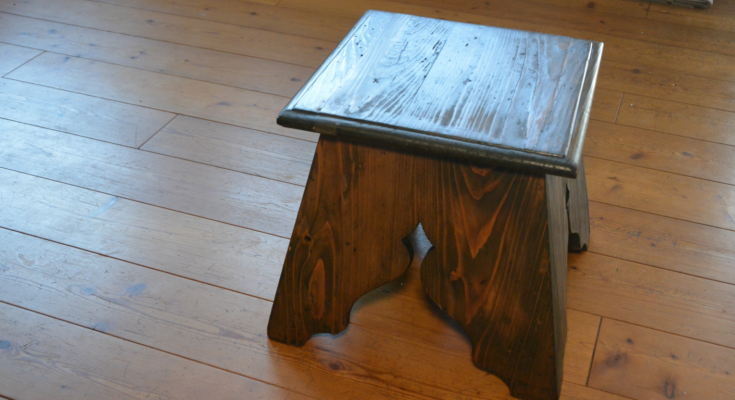
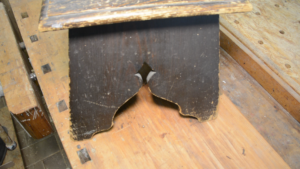
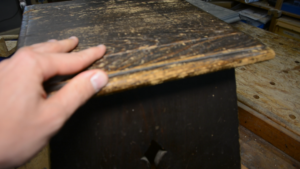
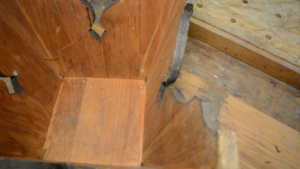

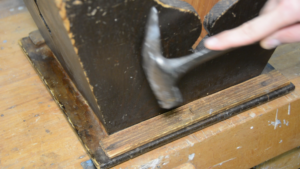
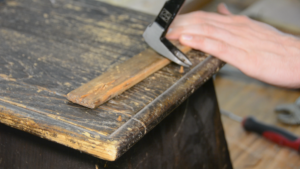
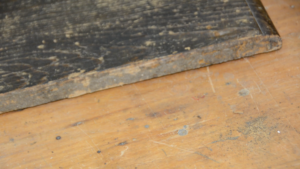
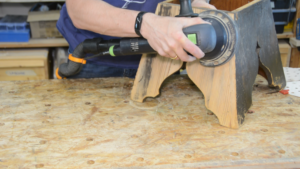
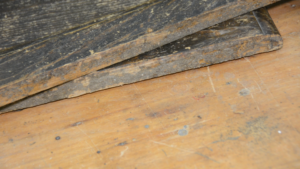
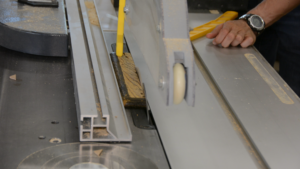
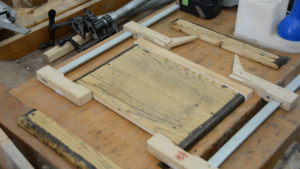
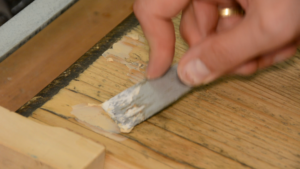
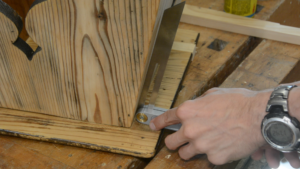
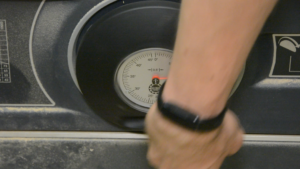
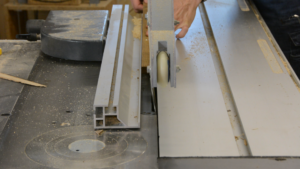
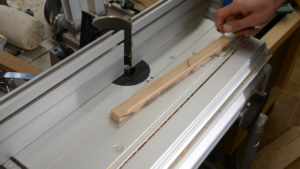
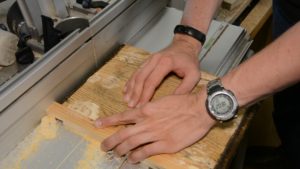
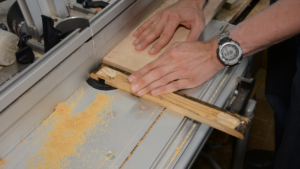
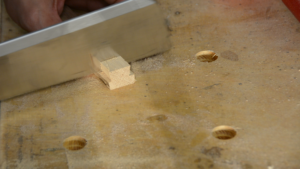
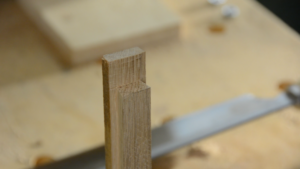
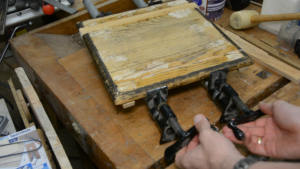
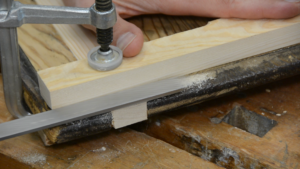
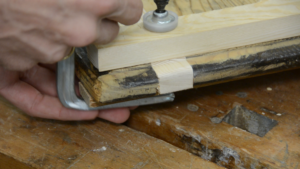
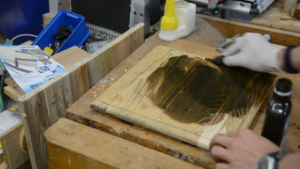
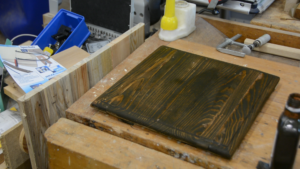
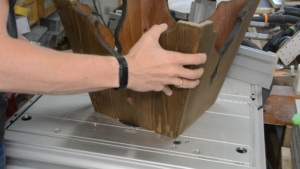

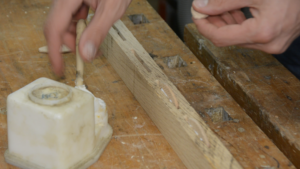
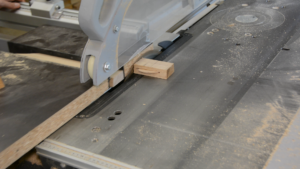
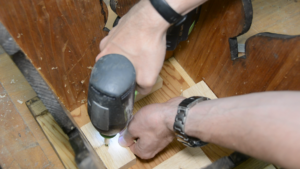
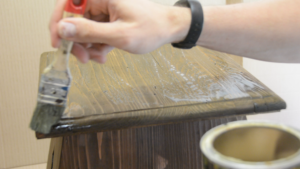


Thanks again!
How can I purchase the files for the 3d printed forstner bit sharpener? I cannot find any way to contact you directly, or to make a comment on that post.